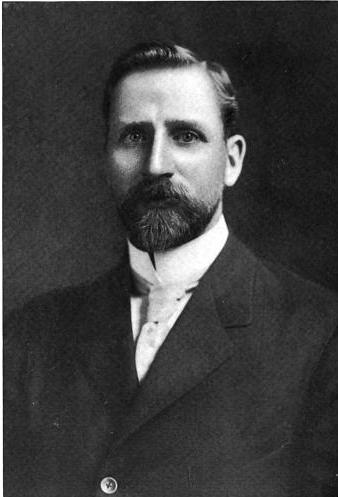Birth of Clarence Ussher (September 9, 1870)

American physician and missionary Clarence Ussher was an eyewitness of the Armenian self-defense of Van and author of one of the most important testimonies about the Turkish attack and the massacre of tens of thousands of Armenians in the Van region.
He was born on September 9, 1870, in Aurora, Illinois. His father was posted to Montreal as a bishop of the Reformed Episcopal Church and eventually moved with the family to Canada. Ussher received his early education in Montreal and then studied at the Reformed Episcopal Seminary in West Philadelphia, Pennsylvania. After some missionary work in Wyoming, he continued his studies at the University Medical College of Kansas City.
He remained in Kansas City after graduation until 1898, when he decided to join the global missionary movement. The American Board of Commissioners for Foreign Missions first sent him to Kharpert and then, after a year, to Van, because the town required a physician. He immediately began his work in orphanages that housed hundreds of Armenian orphans of the Hamidian massacres were being housed. In 1900 she married fellow American missionary Elizabeth Barrow Ussher (1873-1915). They had three sons and a daughter.
Ussher was stationed in the American hospital in Van when Cevdet Bey, brother-in-law of War Minister Enver Pasha, was appointed governor. The new governor arrived in late March, accompanied by thousands of soldiers and Kurdish and Circassian irregulars. His methods left the Armenians with little choice but to respond with armed resistance.
One of Cevdet’s first acts was to demand of the Van Armenians that they supply 4,000 able-bodied men for work battalions, but the Armenian leadership, fearful of Cevdet’s intentions, offered 500 men and payment of the standard exemption fee for the rest, which Cevdet rejected. On April 16, Cevdet ordered the arrest of a community leader in the town of Shadakh, but townspeople, acting on a rumor of his impending murder, surrounded the police station demanding his release. Cevdet then invited A.R.F. leaders Arshag Vramian (an Ottoman Parliament deputy) and Ishkhan to visit Shadakh on a peace mission, but had them assassinated en route.
On April 19, Cevdet issued a secret order of extermination to his forces. On the following day, units under his command attacked Armenian villages throughout the vilayet. Ussher estimates that some 55,000 Armenians were consequently slaughtered. The Turkish forces burned the houses of the Armenian districts that had been left outside the Armenian defensive perimeter and settled in for a siege of the city of Van on April 20.
According to Ussher, by the time of the siege there were only 300 men armed with modern rifles left in Van, plus another 1,000 armed with pistols and “antique weapons.” Ordnance was also a constant problem for the defenders, but the city’s metalworkers were able to manufacture about 2,000 rounds of small arms ammunition a day, from scrap metal and Turkish shrapnel, for the duration of the siege.
By mid-May, the defenders were becoming concerned about their dwindling food supply. However, on May 14, the Turkish forces unexpectedly retreated. The cause of the retreat became evident on May 18, when members of an Armenian regiment of volunteers arrived. They were the vanguard of the Russian Army, which arrived some hours later. One of Cevdet’s last acts before the retreat was to order the shelling of the American compound, which was a violation of diplomatic immunity. Ussher suggests that it was made from Cevdet’s conviction that the Americans had aided the city’s defense.
With the siege lifted, and the Russians continuing their advance, the Armenian Provisional Government was briefly formed. In June, a typhus epidemic swept the city, and both Ussher and his wife Elizabeth fell ill; she succumbed to the disease on 14 July and was buried the next day in the city. Ussher himself remained ill for many weeks, during which time the Russian forces in Turkey suffered reverses and were ordered to retreat, abandoning Van once again to the advancing Turks.
Thousands of Armenians fled the city rather than fall once more into Turkish hands, fleeing across the border to Eastern Armenia. More than 270,000 refugees were able to make their escape over the border. All Americans also decided to flee. As Ussher was still much too ill to walk, he was placed on a litter suspended between two horses.
Ussher published a memoir regarding his experience in Van, An American Physician in Turkey: A Narrative of Adventures in Peace and War (1917). It is considered one of the most detailed eyewitness accounts of the events.
After the war, Ussher returned to the United States, and later served in Yerevan from 1919 to 1923 as Near East Relief chief. He eventually settled in Santa Monica, California, where he died on September 20, 1955, at the age of 85. He was prominently featured as a character in Atom Egoyan’s movie Ararat (2003).
